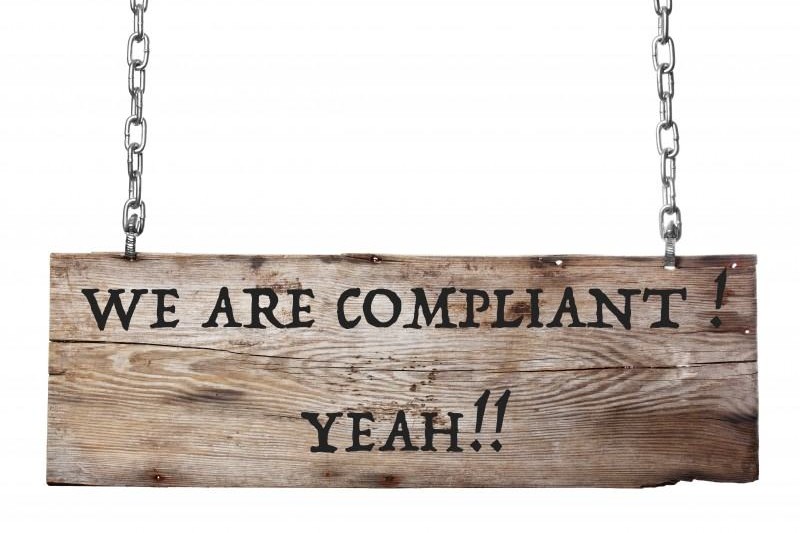Can we produce quality products without regulations or norms?
OF COURSE!
Does that mean that regs are useless.
OF COURSE NOT!
History shows us a very simple 4-step path of evolution for these regs.
FIRST : a problem.
Whether it is a problem with the braking system for an automobile maker, a contaminated vaccine for a pharmaceutical company or a defective O-ring for the space shuttle, the whole process of “improvement” unfortunately frequently starts with a failure to do the right thing at the right time. A faulty decision, a lack of clarity or greed sometimes will generate a situation where the conditions will almost inevitably, and ultimately, yield to a disaster.
SECOND : public outcry.
We are a bunch of whiners and complainers…and with good reasons!
The aforementioned problems still abound today! As soon as we think we are safe a new problem arise! Just think of the Thalidomide in the 60s. 40 years laters and strict regulations in the pharmaceutical industry and ever increasing visibility and law suits, one might feel finally safe …and then …Chinese melanine in infant milk !! The public outcry rises again and again until finally ….
THIRD : government reaction and new regulation
After years of debate and consultation efforts with the targeted industry (hopefully!) a new regulation will appear and prevent further similar problems. Although this new regulation or law is all based on historical data, concern for public safety and improved quality the next step , and only the next step , will insure any evolution…
FOURTH : adaption
This is where, surprisingly, it hurts the most. Not the new regulation. No, this one usually makes sense (most of it anyway).
No, what hurts most is the resistance that is observed coming from the very industry that generated the problem initially. A new regulation will obviously require and demand, new methods, more efforts and, yep, additional documentation, to protect the public. Doing so will, or should, increase quality, decrease recalls and quality cost and hopefully increase profit and public safety.
Why then, do companies resist in implementing the new regulation? Don’t they see the benefits? The increased trust confidence of the public, their clients and customers ?
This is where I humbly suggest that we should think of Reg-less quality to replace reckless quality.
Norms and regulations focus on the HOW .
Reg-less quality focus on the WHY.
and Reckless quality does not focus at all!!!
Goethe’s famous saying still rings true today : “If you understand the WHY you can live with the HOW.”
History tells us that humans and companies, do not learn very rapidly. We have been focused on the details for years and years. Details ARE important. But details are useless IF the rationale is absent.
Dan Pink in his excellent book DRIVE, describes three components to human motivation.
1- Autonomy
in the way we perform, who we assemble with etc.
2- Mastery
The drive to perform well, to master our crafts, to learn and become better
3- Purpose
The innate desire to understand WHY we accomplish what we have to accomplish, the need of a goal bigger than the tasks at hand and far reaching into the future
All this brings me to the level of compliance we want to achieve in our organizations. (I must apologize for the following lines : they are not mine and I have lost the original reference! Please help me here!!!)
Level 1 : Forced compliance to the rules and regulations
I do not see the benefits of all this BUT I do not want to lose my job. I do what has to be done. Just enough to get by but I make sure I let everyone know that I did not get aboard this “compliance” thing.
Level 2 : Formal compliance
I see the benefits, globally. I do what has to be done. No more, no less.
Level 3 : Sincere compliance
I see the benefits of the “compliance” vision. I do what is expected of me and more. I follow the law to the letter! I am a “good soldier”.
Level 4 : Adhesion
I WANT it! I will do what has to be done within the essence of the law
Level 5 : Engagement
I WANT IT! I will make sure it happens. I will help establish the structures to make sure we realize it!
Where do you see YOUR organization?
If we are not at level 4 or 5 , where and when have we failed?
Did we confuse our role between Quality managers and Quality leaders where managers do the things right and leaders do the right things?
Did we fall under the spell of the acute “checkititis”, the dreaded disease of the checkbox syndrome?
Did we miss the boat? Or simply forgot to all row in the same direction?
Quality by design, said Juran.
Who said “Quality by culture”?
© Copyrighted material Aliter Concept 2015. Please do not print or copy without permission from the author.
BUT DO SHARE IT using the social network buttons !!
RECENT POSTS
26 March 2015
Magical interactions in the intelligent organization – End
Nos participants sont à l'extérieur sous une température inacceptablement basse pour cette fin…




